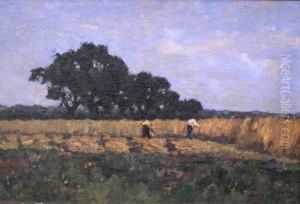Willem Henri Van Schaik Paintings
Willem Henri van Schaik was a Dutch artist known for his contributions to painting and graphic design during the 20th century. Born on January 13, 1889, in Utrecht, the Netherlands, he developed an interest in art at a young age, which led him to pursue a career in the arts.
Van Schaik's early work was influenced by the Amsterdam Impressionists, and he was particularly known for his landscapes, cityscapes, and still-life paintings. His style evolved over time, incorporating elements of Expressionism and later on, embracing more abstract forms.
During his career, van Schaik was active in various artists' associations and groups, which played a significant role in the Dutch art scene of the time. He participated in many exhibitions, both solo and group shows, and his work was well-received by critics and collectors alike.
Unfortunately, Willem Henri van Schaik is not as widely recognized internationally as some of his contemporaries, and information about his life and career may not be as abundant. Nonetheless, he made a significant impact within the Dutch art community before his death on April 9, 1966.
Over the years, van Schaik's artwork has been displayed in numerous Dutch museums and galleries. His paintings are part of private and public collections, serving as lasting testaments to his artistic legacy. Despite the challenges of the two World Wars and the changing art markets of the 20th century, van Schaik managed to maintain a consistent output and develop a distinctive artistic voice that contributed to the rich tapestry of Dutch modern art.
